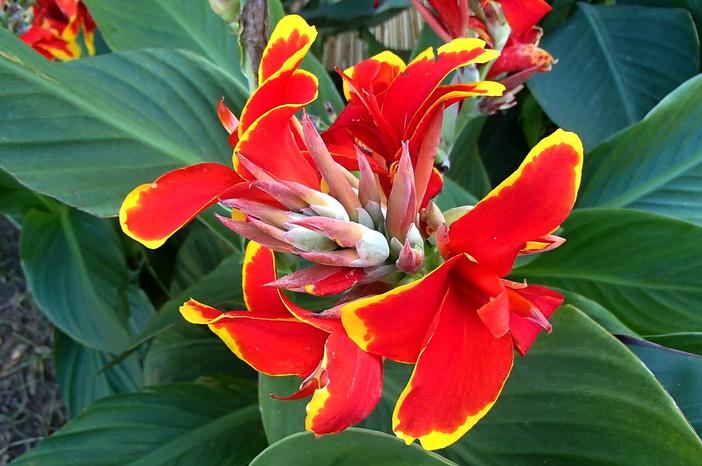Indian Shot
(Canna indica)
Indian Shot (Canna indica)
/
/

bluefootedbooby
CC BY-SA 2.0










































































Estimated Native Range
Summary
Indian Shot is valued for its striking flowers and lush foliage, making it a popular choice for tropical-themed gardens, borders, and as a specimen plant. It is also used for its starchy rhizomes in some traditional cuisines. The plant prefers a rich, humus-rich, and light substrate, thriving in deep, well-drained soil with full sun exposure and a pH between 5.5–7.5. Planting should occur at a depth of 10 cm after the last frost. While it can endure dry spells, occasional watering enhances growth. Canna indica is cold-tolerant to -10 °C in mild climates, but foliage may be damaged at 0 °C. Fertilization is crucial for optimal growth, with seedling fertilizer applied during the first tillage and adjusted according to seedling conditions. Even application of fertilizer around the roots promotes uniform growth and water absorption. Potential issues include susceptibility to pests like canna leaf rollers and fungal diseases such as rust. It is potentially invasive when grown outside its native range, so caution is advised.CC BY-SA 4.0
Plant Description
- Plant Type:
- Height: 1-4 feet
- Width: 1-3 feet
- Growth Rate: Moderate
- Flower Color: Orange, Red, Yellow
- Flowering Season: Summer, Fall
- Leaf Retention: Evergreen
Growth Requirements
- Sun: Full Sun
- Water: Low, Medium
- Drainage: Medium
Common Uses
Bee Garden, Bird Garden, Border Plant, Butterfly Garden, Deer Resistant, Edible*Disclaimer: Easyscape's listed plant edibility is for informational use. Always verify the safety and proper identification of any plant before consumption., Hummingbird Garden, Potted Plant, Salt Tolerant, Showy Flowers, Street Planting, Water Garden
Natural Habitat
Native to tropical and subtropical regions of the New World, including moist and open areas such as riverbanks and clearings
Other Names
Common Names: African Arrowroot , Edible Canna , Purple Arrowroot , Sierra Leone Arrowroot , 美人蕉;白蓮蕉花;白花曇花;紫葉美人蕉;紅花美人蕉
Scientific Names: Canna edulis , Canna indica , Canna patens , Canna lutea , Canna compacta , Canna brasiliensis , Canna speciosa , Canna altensteinii , Canna coccinea , Canna discolor
GBIF Accepted Name: Canna indica L.